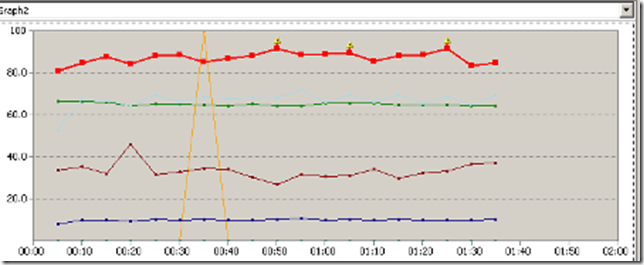Microsoft Visual Studio Team System/Test Edition provides an excellent tool to perform web site load testing. Using this load testing tool, you can monitor and measure the site performance along with system status with respect to a given load/stress.
Fortunately VSTS provides a support for wide range of performance counters, from web page request per second to condition of physical disk, memories. Unfortunately, they are too huge that, initially testers/designers get overwhelmed with all of those, to find out a clear idea about the performance of the site they built.
The number of counter parameters to be considered by the load tester/designers is greatly varies based on the type and size of the web application to be tested. Here is my favorite top 10 performance counters that I use on my each load tests, regardless of project size. These counters are based two primary categories: Web Site end and Hardware end.
Web Site Related Performance Counters
Web site related performance counters are the counters that provide valuable information about the health of web site that is under test. These parameters are categorized as Requests, Pages, Tests and Errors.
1. Request - Avg Req/Sec
Desired value range: High
This is the average number of requests per second, which includes failed and passed requests, but not cached requests, because they are not issued on web server. Please note that, all http requests, such as image, java-script, aspx, html files generates separate/individual/single request .
2. Request - Avg Req Passed/Sec
Desired value range: High
While “Request - Avg Req/Sec” provides an average with respect to all passed and failed request, “Request - Avg Req Passed/Sec” provided the average of passed requests. This info also helps to determine the average number of failed requests/sec.
3. Page - Avg Page Time (Sec)
Desired value range: Low
While a single request refers to request to a single http elements (such as css, java-script files, images, aspx, html etc), a page is the container of all of the corresponding requests generated when a web page is requested (for instance via the browser address bar). “Page - Avg Page Time (Sec)” counter refers to the average of total time taken to load a page with all of its http elements.
4. Test - Total Test
Desired value range: High
For instance, we have created a web test, that contains two web pages, pushing on a button on the first page will re-direct the user to the second page, although there will be multiple entries will be involved for Requests and Pages counters, but the whole process will be considered as a single Test.
This counter considers the total number of tests (which includes passed and failed tests) during the test period.
5. Scenario - User Load
Desired value range: High
This counter considers the maximum user load that has been provided during the test run. Please note that, for Step Load pattern, where more user volume is added on step by step basis, the maximum user load will be counted through this counter parameter.
6. Errors - Errors/Sec
Desired value range: Low
Includes average number of errors occurred per second, which includes all types of errors.
Hardware Related Performance Counters
7. Processor - % Processor Time
Desired value range: Low
This is the number of processor time being utilized in percentage.
8. Memory - Available MBytes
Desired value range: High
This the amount of Memory available in Mega byte.
9. Physical Disk - Current Disk Queue Length
Desired value range: Low
It shows how many read or write requests are waiting to execute to the disk. For a single disk, it should idle at 2-3 or lower.
10. Network Interface - Output Queue Length
Desired value range: Low
This is the number of packets in queue waiting to be sent. A bottleneck needs to be resolved if there is a sustained average of more than two packets in a queue.

No comments:
Post a Comment